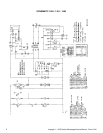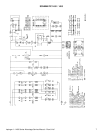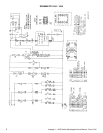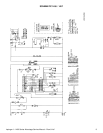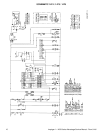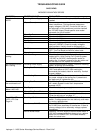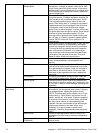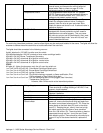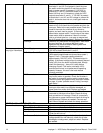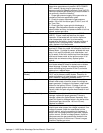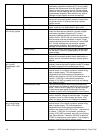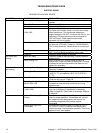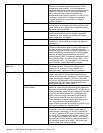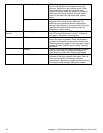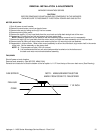
Impinger I – 1400 Series Advantage Service Manual - Dom & Int’l
14
DC Motor Control Board Check for 120 VAC input to the control board at
terminals L1 and L2. If not present, check the oven
fan switch and wiring back to 3 amp fuse and then
back to power source if necessary. If 120 VAC is
present at L1 and L2, check both fuses on control
board (4A line) and (1A armature), check the VDC
output at terminals A+ and A-. If 120 VAC is present
at terminals L1 and L2, and DC voltage is present A+
and A-, but motor does not run, check gear motor as
follows.
Conveyor Gear Motor If DC voltage is present at A+ and A-and the motor
does not run, first check the mini breaker and then the
conveyor. Refer to the next possible cause. Check the
leads to the motor for evidence of any shorts or
opens, and each lead to ground. If the motor fails the
above tests, replace motor. From the top of the motor,
rotate motor shaft to determine if there is a locked
rotor or a locked gear box (use care so magnet and
the H.S. board are not damaged). Replace as needed.
Conveyor Check for any mechanical mis-alignment . Also check
for worn bearings. A conveyor belt that is over
tightened may cause excessive bearing wear and
sometimes, irregular speed.
Power Supply Check power supply at the DC control board for the
120 VAC at board terminals L1 and L2
D.C. Motor Control Board Place the test meter probes on terminals A+ and A- .
(With speed potentiometer set to maximum speed (
Approx. 2 min.) The meter reading should be
approximately 100 VDC (±3%). The board output is
steady. If the board voltage output is unsteady beyond
limits (±3%) then the board is probably bad. Always
check the speed pot. , be sure it is okay before
changing a board. This test is not always 100%
accurate as this test is not performed at operating
speeds. However, this test is the best method
currently available.
Conveyor speed
varying or intermittent
DC Gearmotor If the DC control board is steady then the problem
may be the motor or gearbox. Check the brushes in
the motor for excessive arching and/or unusual wear.
Check the motor and gearbox from instruction located
on page 14 under "possible cause" Listing "conveyor
gear motor."
Magnet Check to insure that the magnet (cemented to shaft of
conveyor drive motor) has not been damaged, or
come loose from motor shaft. Replace as needed.
Hall Effect Sensor Check for any physical damage to Hall Effect Sensor
(mounted on conveyor drive motor Check all wiring
and connections for damage. Check all connections
for tightness or proper location and check all wiring for
visible damage. Replace as needed. Connect new
Hall Effect to system and check for steady operation.
MODELS 1456 - 1457-1474-1475-1476
Gas Supply Check for adequate gas supply to oven.
Manual Gas Shut-Off Valve Check to see that manual shut-off valve is open.
Fan Switch Check to see that the fan switch is on.
Main Oven Fan Check if main oven fan is operating. If not, refer to
"Oven fan will not run."
Oven will not heat
Air Pressure Switch Check for supply voltage on both sides of switch. If
voltage present on one side only, check for air tube
blockage or misalignment, adjust air switch. Replace
as needed.



